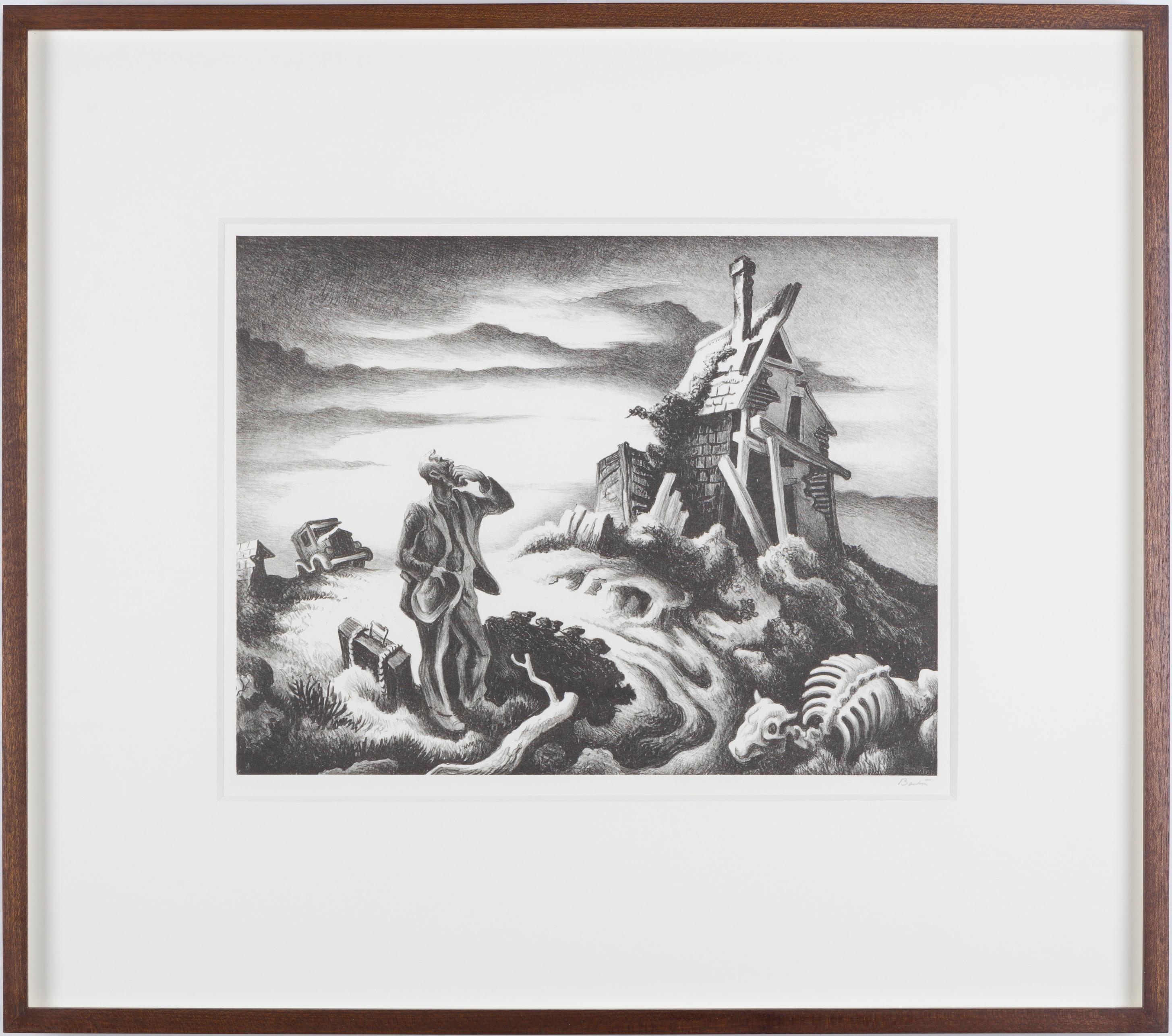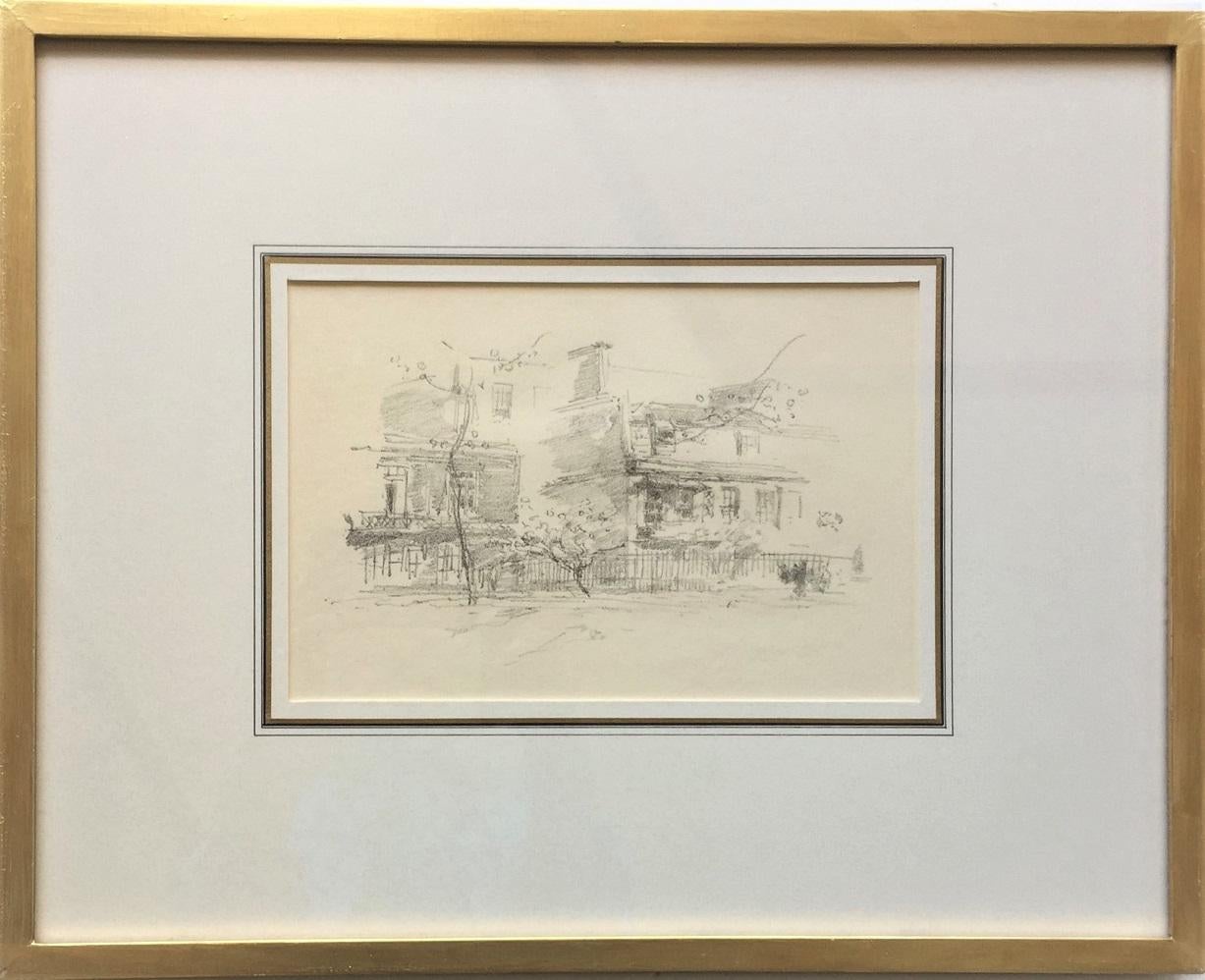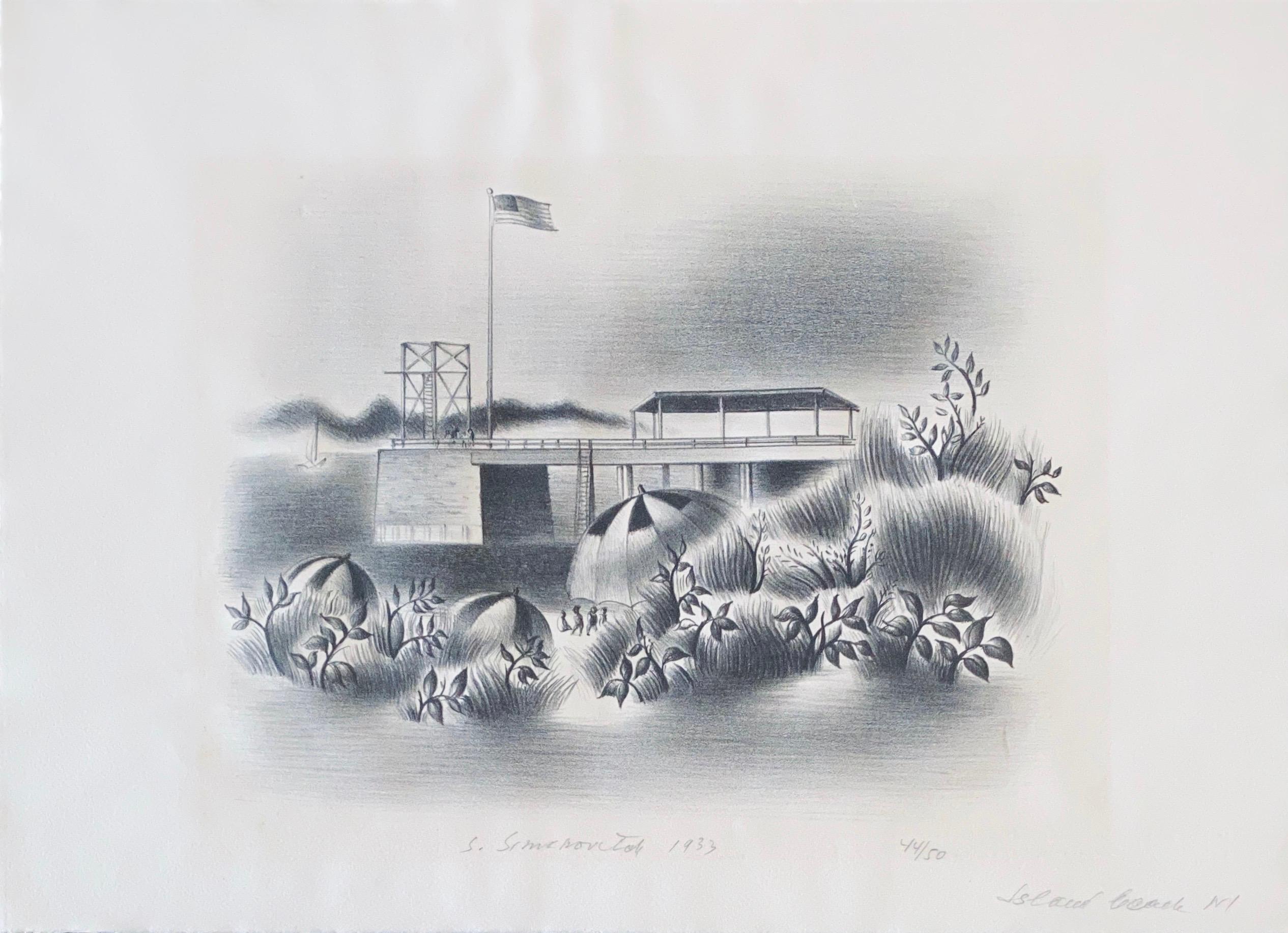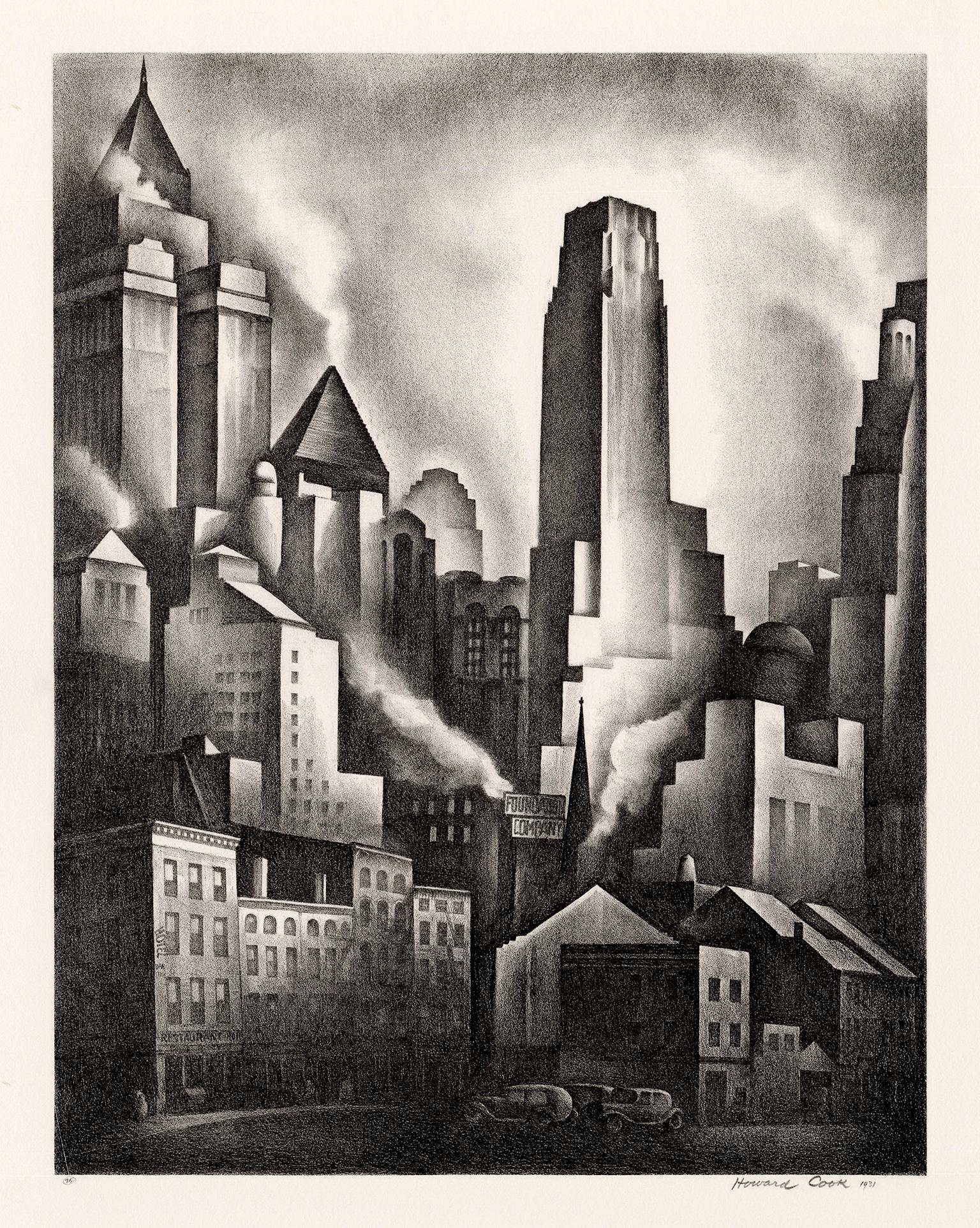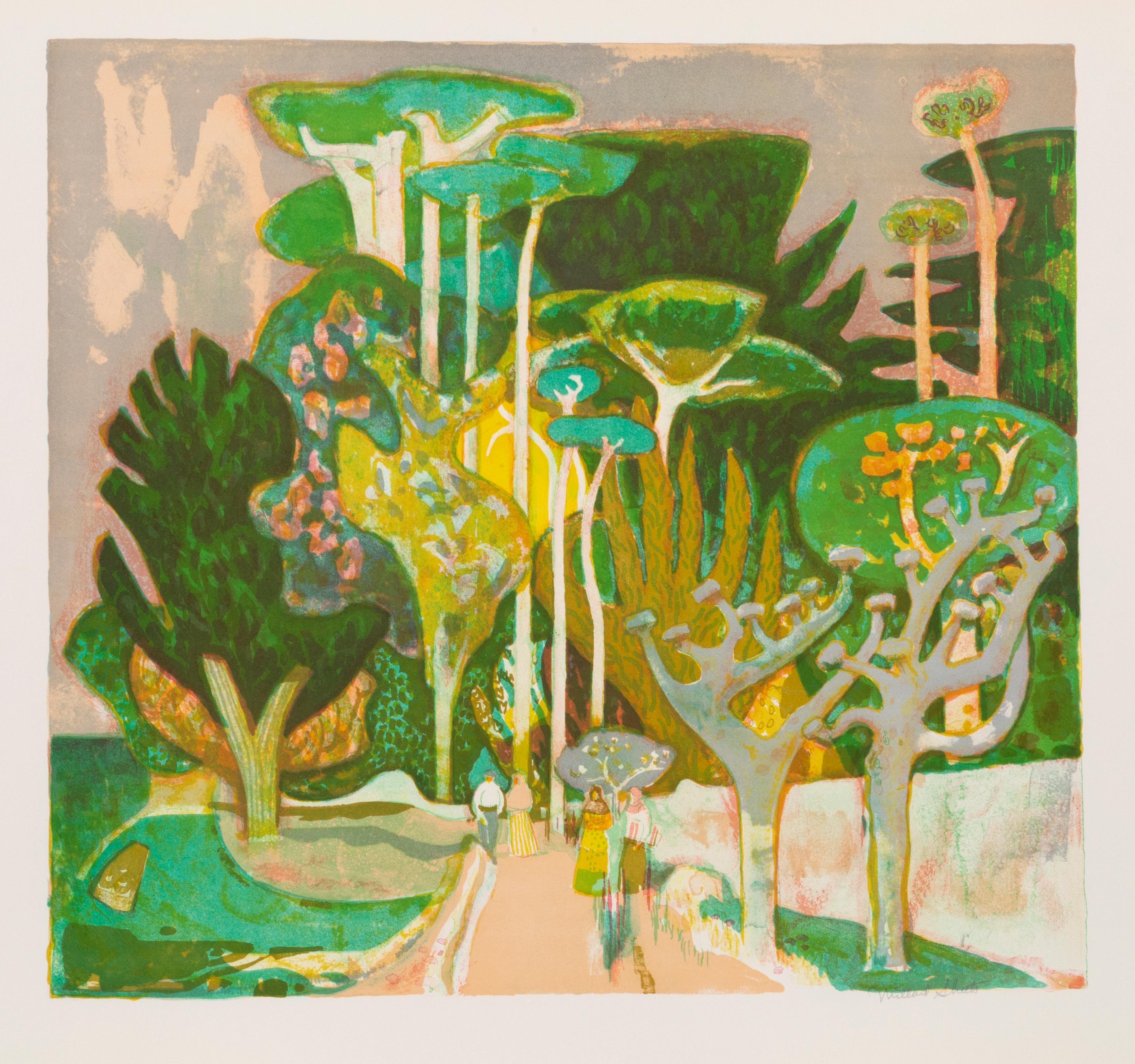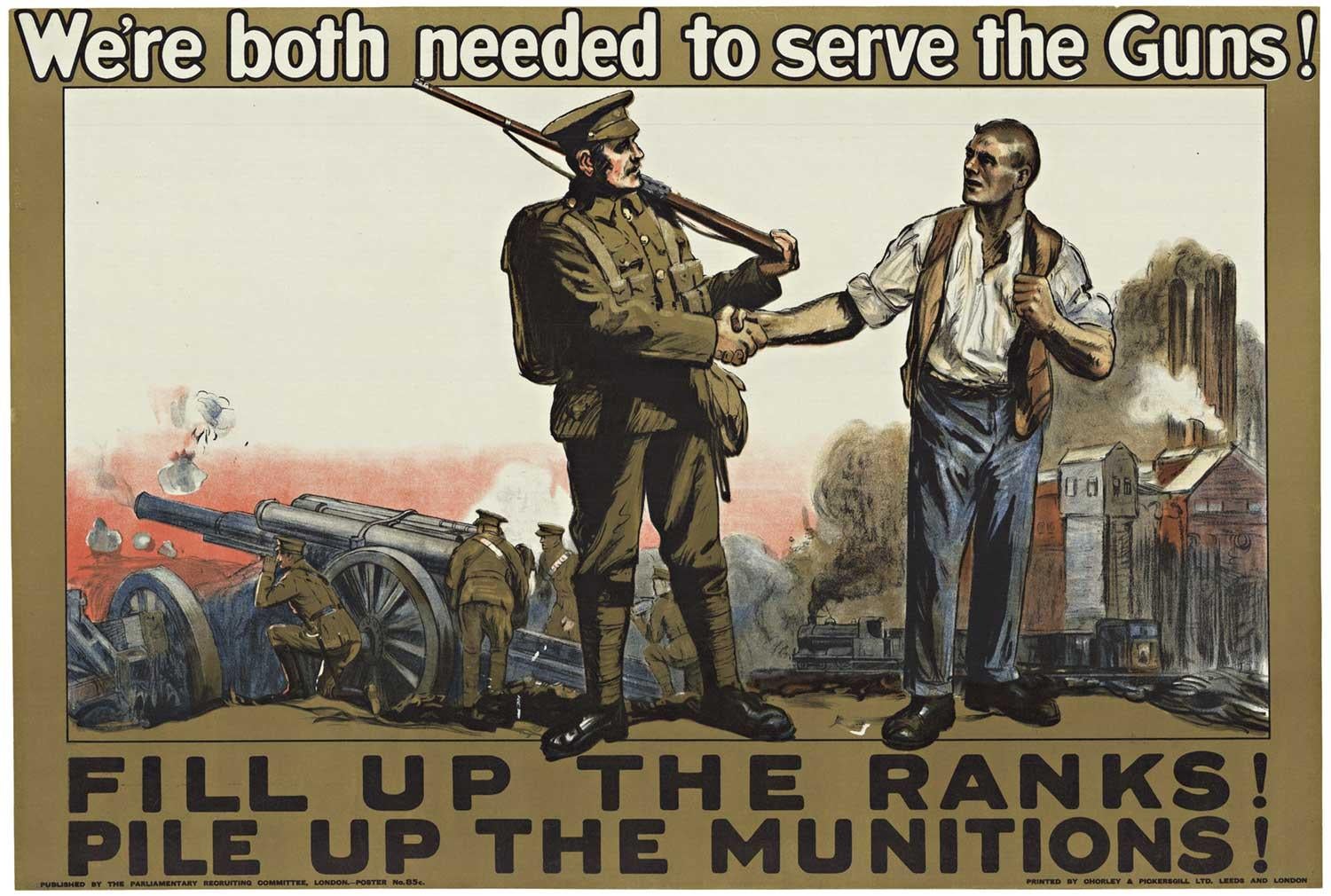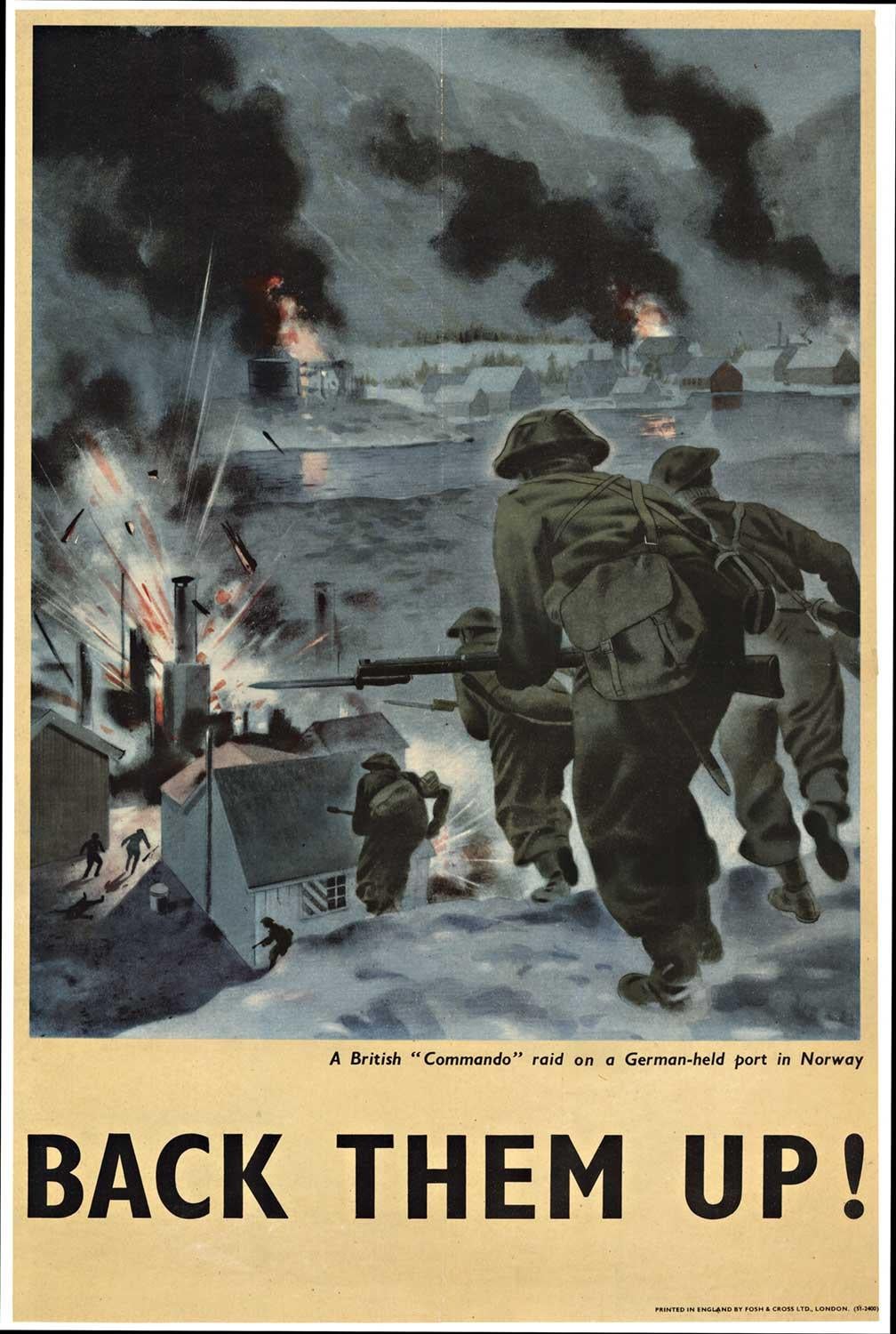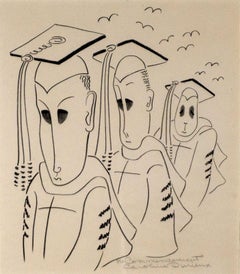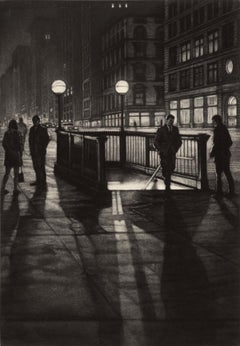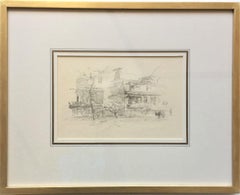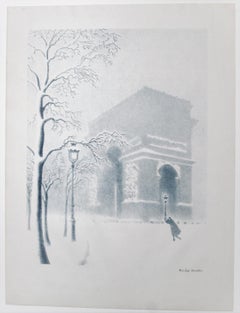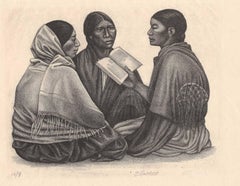
Alphabetization (Mexican teacher helping the poor to learn skill of reading)
View Similar Items
Elizabeth CatlettAlphabetization (Mexican teacher helping the poor to learn skill of reading)1950
1950
About the Item
- Creator:Elizabeth Catlett (1915 - 2012, American)
- Creation Year:1950
- Dimensions:Height: 9.25 in (23.5 cm)Width: 11.5 in (29.21 cm)
- Medium:
- Movement & Style:
- Period:
- Condition:This image is in very good condition for a print from the secondary market. It is a rare image issued in a very small edition of just 10 impressions.
- Gallery Location:New Orleans, LA
- Reference Number:1stDibs: LU84133707352
Elizabeth Catlett
Promoting social change was Elizabeth Catlett’s prime motivation as an artist. The granddaughter of enslaved people, Catlett was born in Washington, D.C., in 1915 and spent her adult life driven to create sculptures, prints and paintings that would reach, celebrate and uplift those who were barely visible in art.
“I have always wanted my art to service Black people — to reflect us, to relate to us, to stimulate us, to make us aware of our potential,” Catlett said of her work in the 1978 book Art: African American. She studied art history, drawing and other disciplines at Howard University, and as an MFA student at the University of Iowa, her mentor, the painter Grant Wood, advised her to “take as her subject what she knew best.” As she later told an interviewer, “The thing that I knew the most about was Black women, because I am one, and I lived with them all my life, so that’s what I started working with.”
The centerpiece of Catlett’s spring 1940 thesis project, Negro Mother and Child — a figure of a Black mother embracing her child, carved from Indiana limestone — was awarded first place for sculpture at the American Negro Exposition in Chicago held that year.
Catlett taught art at Dillard University in New Orleans — where she battled discrimination daily — and met her first husband, artist Charles White, while living in Chicago. She resigned from Dillard in 1942 and moved to New York City. There Catlett befriended painter Jacob Lawrence and studied lithography and other media at the Art Students League. Inspired by her studies with Ossip Zadkine, she began to incorporate abstract forms into her wood and stone sculptures.
In 1946, a grant supported her travel to Mexico to study its murals and graphic art. As Catlett had experienced the barbaric and deeply destructive system of racial segregation that the Jim Crow laws enforced in the United States, Mexico felt like a welcome escape. She would make the country her home and create much of her work there, divorcing White and marrying painter and printmaker Francisco Mora of the Taller de Gráfica Popular (People's Graphic Workshop), or TGP, in 1947. She collaborated with TGP, a graphic arts workshop dedicated to social issues located in Mexico City, on a number of works, including one of her best-known linoleum cut prints, Sharecropper (1952). The heroic depiction of an anonymous farm worker was intended to draw attention to the plight of Black tenant farmers who were ruthlessly exploited by the era’s white landowners.
Another iconic work of Catlett’s is Black Unity (1968), a raised fist sculpted from cedar, smooth and gleaming, with one side taking the form of two faces that resemble carved African masks. In the same year, the raised fist, a powerful symbol of the Civil Rights struggle and emblem of the Black Power movement, had been immortalized by two Black American athletes, John Carlos and Tommie Smith, who raised their black-gloved fists during the playing of the “Star-Spangled Banner” at the Summer Olympics in Mexico City.
Catlett was a professor of sculpture at the National Autonomous University of Mexico’s School of Fine Arts in Mexico City from 1958 until 1976, when she retired to focus on making art, exhibiting extensively in the years that followed. In 2003, she completed the Ralph Ellison Memorial in New York’s Riverside Park. That same year she received a lifetime achievement award from the International Sculpture Center. Her work is in the collections of museums worldwide, including the Smithsonian American Art Museum, Museum of Modern Art and the Metropolitan Museum of Art.
Find a range of authentic Elizabeth Catlett art today on 1stDibs.
- CommencementBy Caroline DurieuxLocated in New Orleans, LACaroline Durieux's image captures a lone figure in her garden in this southern plantation in Louisiana. "Plantation Garden" is a lithograph created by Durieux in 1946 in an edition of 20. It is signed in pencil. Durieux shared her feeling about this piece with these reflections. “The spectrum analysis of satire runs from the red of invective at one end to the violet of the most delicate irony at the other.” David Worcester 16, "The Art of Satire". The feeling expressed in Plantation Garden is that of a dirge with ironic overtones; it is sad, nostalgic yet satirical. The bent figure of the old lady, the ancient trees, the static moss, all seem to belong to the past; even the lady is old. For contrast, a ray of late afternoon sun lights up the only young note in the picture: perennials in the foreground. When “we are satirical and we are friendly at the same time, the consciousness of the friendship gives a regretful and tender touch to the satire, and the sting of the satire makes the friendship a trifle humble and sad.” George Santayna 255, "The Sense of Beauty". This concept of satire mixed with friendship comes closer to humor because there is less censure involved. In "Plantation Garden", the satire is tempered by a feeling of empathy. Caroline Durieux (American, 1896 – 1989) Printmaker, painter, satirist, innovator, social activist, Caroline Durieux was born in New Orleans and was already making sketches by the age of four. Her formal art training was at Newcomb College (1912-1917) and the Pennsylvania Academy of Fine Arts (1918-1920). Carl Zigrosser of the Philadelphia Museum of Art encouraged Durieux to try lithography. While living in Mexico, she learned lithography from Emilio Amero...Category
1940s American Modern Landscape Prints
MaterialsLithograph
- Mexican Orchestra (joy of the people is captured in this celebratory festival)By George Overbury HartLocated in New Orleans, LA"Mexican Orchestra" is one of the George Overbury Hart's largest pieces. It is #14 from a limited edition of 50. The image captures a festive event with hanging lanterns, an orches...Category
1920s American Modern Figurative Prints
MaterialsLithograph
- Into the Night (a lone male emerges from a subway stop by the Flatiron Building)By Frederick MershimerLocated in New Orleans, LAA lone figure emerges out of bright lights streaming from a subway entrance at the corner of 23rd and Broadway near the Flatiron Building and Madison Square Park. He has just exited the uptown...Category
Early 2000s American Modern Figurative Prints
MaterialsMezzotint
- Delayed (suburban New Jersey commuter walks thru rain because bus is late)By Art WergerLocated in New Orleans, LA"Delayed" is an edition of 100. Art Werger creates a memory of his boyhood home in suburban New Jersey. It's late, cold and rainy as this woman raises her umbrella to brave the wal...Category
21st Century and Contemporary American Modern Figurative Prints
MaterialsMezzotint
- Fire Dance (Flambeaux carriers light the path of Endymion parade in New Orleans)By Frederick MershimerLocated in New Orleans, LAThis impression is #109 Mershimer created a color mezzotint of the Mardi Gras scene in mid-city New Orleans. The parade was the Endymion crew marching on Canal Street near Jefferson ...Category
1990s American Modern Landscape Prints
MaterialsMezzotint
- 7 A. M. St. LouisBy Art WergerLocated in New Orleans, LAIt's early morning I'm St. Louis in this 2002 mezzotint that is signed and numbered Art Werger’s lyrical suburban scenes are evocative of boyhood summer evenings while his city imag...Category
21st Century and Contemporary American Modern Figurative Prints
MaterialsMezzotint
$125 Sale Price28% Off
- Lindsey Row, ChelseaBy James Abbott McNeill WhistlerLocated in Storrs, CTLindsey Row, Chelsea. 1888. Lithograph. Way 20; Levy 33; Tedeschi, Stratis and Spink 23. 5 x 8. Edition of 56 posthumous impressions printed by Goulding, in addition to the 14 lifet...Category
Late 19th Century American Modern Landscape Prints
MaterialsLithograph
- Arc de Triomphe in Snow (Napoleon's Triumphal Arch)By Ellison HooverLocated in Storrs, CTArc de Triomphe in Snow (Napoleon's Triumphal Arch). c. 1930. Lithograph printed in grey ink. 11 1/4 x 9 7/16 (sheet 16 x 12). A tonal impression printe...Category
1930s American Modern Landscape Prints
MaterialsLithograph
$1,750 Sale Price22% Off - Victoria ClubBy James Abbott McNeill WhistlerLocated in Storrs, CTVictoria Club. 1879 and 1887. Lithograph. Way catalog 11 state ii; Levy catalog 22; Tedeschi, Stratis and Spink catalog number 15 state ii. 8 x 5 3/8 (sheet 16 5/8 x 12 1/16). A ri...Category
Late 19th Century American Modern Figurative Prints
MaterialsLithograph
- Simka Simkhovitch WPA Artist Lithograph Island Beach 1933 American ModernistBy Simka SimkhovitchLocated in Surfside, FLSimka Simkhovitch (Russian/American 1893 - 1949) signed lithograph. Pencil signed and dated "S. Simkhovitch 1933" lower center. Title "Island Beach," in pencil lower left of sheet. Numbered "44/50" in pencil lower right. (it is either Island Beach Wisconsin or New Jersey) Simka Simkhovitch (Симха Файбусович Симхович) (aka Simka Faibusovich Simkhovich) (Novozybkov, Russia May 21, 1885 O.S./June 2, 1885 N.S.—Greenwich, Connecticut February 25, 1949) was a Ukrainian-Russian Jewish artist and immigrant to the United States. He painted theater scenery in his early career and then had several showings in galleries in New York City. Winning Works Progress Administration (WPA) commissions in the 1930s, he completed murals for the post offices in Jackson, Mississippi and Beaufort, North Carolina. His works are in the permanent collections of the Dallas Museum of Art, the National Museum of American Art and the Whitney Museum of American Art. Born outside Kyiv (Petrograd Ukraine) into a Jewish family who owned a small department store. During a severe case of measles when he was seven, Simcha Simchovitch sketched the views outside his window and decided to become an artist, over his father's objections. Beginning in 1905, he studied at the Grekov Odessa Art School and upon completion of his studies in 1911 received a recommendation to be admitted to the Imperial Academy of Arts. Though he enrolled to begin classes in architecture, painting, and sculpture at the Imperial Academy, he was dropped from the school roster in December because of the quota on the number of Jewish students and drafted into the army. Simchovitch served as a private in the 175th Infantry Regiment Baturyn [ru] until his demobilization in 1912. Re-enrolling in the Imperial Academy, he audited classes. Simka Simkhovitch exhibited paintings and sculptures in 1918 as part of an exhibition of Jewish artists and in 1919 placed 1st in the competition "The Great Russian Revolution" with a painting called "Russian Revolution" which was hung in the State Museum of Revolution. In 1922, Simkha Simkhovitch exhibited at the International Book Fair in Florence (Italian: Fiera Internazionale del Libro di Firenze). In 1924, Simkhovitch came to the United States to make illustrations for Soviet textbooks and decided to immigrate instead. Initially he supported himself by doing commercial art and a few portrait commissions. In 1927, he was hired to paint a screen for a scene in the play "The Command to Love" by Fritz Gottwald and Rudolph Lothar which was playing at the Longacre Theatre on Broadway. Art dealers began clamoring for the screen and Simkhovitch began a career as a screen painter for the theater. Catching the attention of the screenwriter, Ernest Pascal, he worked as an illustrator for Pascal, who then introduced him to gallery owner, Marie Sterner. Simkhovitch's works appeared at the Marie Sterner Gallery beginning with a 1927 exhibit and were repeated the following year. Simkhovitch had an exhibit in 1929 at Sterner's on circus paintings. In 1931, he held a showing of works at the Helen Hackett Gallery, in New York City and later that same year he was one of the featured artists of a special exhibit in San Francisco at the California Palace of the Legion of Honor in Lincoln Park. The exhibit was coordinated by Marie Sterner and included four watercolors, including one titled "Nudes". He is of the generation of Russian Soviet artists such as Isaac Pailes, Serge Charchoune, Marc Chagall, Chana Orloff, Isaac Ilyich Levitan, and Ossip Zadkine. In 1936, Simkhovitch was selected to complete the mural for the WPA Post office project in Jackson, Mississippi. The mural was hung in the post office and courthouse in 1938 depicted a plantation theme. Painted on the wall behind the judge’s bench, “Pursuits of Life in Mississippi”, a depiction of black workers engaged in manual labor amid scenes of white professionals and socialites, was eventually covered over in later years during renovations due to its stereotypical African American imagery. The following year, his painting "Holiday" won praise at an exhibition in Lincoln, Nebraska. In 1940, Simkhovitch's second WPA post office project was completed when four murals, "The Cape Lookout Lighthouse and the Orville W. Mail Boat", "The Wreck of the Crissie Wright", "Sand Ponies" and "Canada Geese" were installed in Beaufort, North Carolina. The works were commissioned in 1938 and did not generate the controversy that the Jackson mural had. The main mural is "The Wreck of the Crissie Wright" and depicts a shipwreck which had occurred in Beaufort in 1866. "The Cape Lookout Lighthouse and the Orville W. Mail Boat" depicted the lighthouse built in 1859 and the mail boat that was running mail during the time which Simkhovitch was there. The boat ran mail for the area until 1957. "Sand Ponies" shows the wild horses common to the North Carolina barrier islands and "Canada Geese" showed the importance of hunting and fishing in the area. All four murals were restored in the 1990s by Elisabeth Speight, daughter of two other WPA muralists, Francis Speight...Category
1930s American Modern Landscape Prints
MaterialsLithograph
- 'Financial District', New York City — 1930s American ModernismBy Howard Norton CookLocated in Myrtle Beach, SCHoward Cook, 'Financial District', lithograph, 1931, edition 75, Duffy 155. A fine, richly-inked impression, on cream wove paper, the full sheet with wide margins (2 3/4 to 5 5/8 inches), in excellent condition. Image size 13 5/16 x 10 3/8 inches (338 x 264 mm); sheet size 23 x 16 inches (584 x 406 mm). Matted to museum standards, unframed. Literature: 'American Master Prints from the Betty and Douglas Duffy Collection', the Trust for Museum Exhibitions, Washington, D.C., 1987. Collections: Crystal Bridges Museum of American Art, Library of Congress, Metropolitan Museum of Art, Philadelphia Museum of Art, Smithsonian American Art Museum. ABOUT THE ARTIST Howard Norton Cook (1901-1980) was one of the best-known of the second generation of artists who moved to Taos. A native of Massachusetts, he studied at the Art Students League in New York City and at the Woodstock Art Colony. Beginning his association with Taos in 1926, he became a resident of the community in the 1930s. During his career, he received two Guggenheim Fellowships and was elected an Academician in the National Academy of Design. He earned a national reputation as a painter, muralist, and printmaker. Cook’s work in the print mediums received acclaim early in his career with one-person exhibitions at the Denver Art Museum (1927) and the Museum of New Mexico (1928). He received numerous honors and awards over the years, including selection in best-of-the-year exhibitions sponsored by the American Institute of Graphics Arts, the Brooklyn Museum, the Society of American Etchers, and the Philadelphia Print Club. His first Guggenheim Fellowship took him to Taxco, Mexico in 1932 and 1933; his second in the following year enabled him to travel through the American South and Southwest. Cook painted murals for the Public Works of Art Project in 1933 and the Treasury Departments Art Program in 1935. The latter project, completed in Pittsburgh, received a Gold Medal from the Architectural League of New York. One of his most acclaimed commissions was a mural in the San Antonio Post Office in 1937. He and Barbara Latham settled in Talpa, south of Taos, in 1938 and remained there for over three decades. Cook volunteered in World War II as an Artist War Correspondent for the US Navy, where he was deployed in the Pacific. In 1943 he was appointed Leader of a War Art Unit...Category
1930s American Modern Figurative Prints
MaterialsLithograph
- 'Backyards of Broadway' — 1920s American Precisionism, New York CityBy Louis LozowickLocated in Myrtle Beach, SCLouis Lozowick, 'Backyards of Broadway ( Waterfront I )', lithograph, 1926, edition 10, Flint 7. Signed in pencil. A fine, richly-inked impression, on BFK Rives off-white, wove paper...Category
1920s American Modern Figurative Prints
MaterialsLithograph
